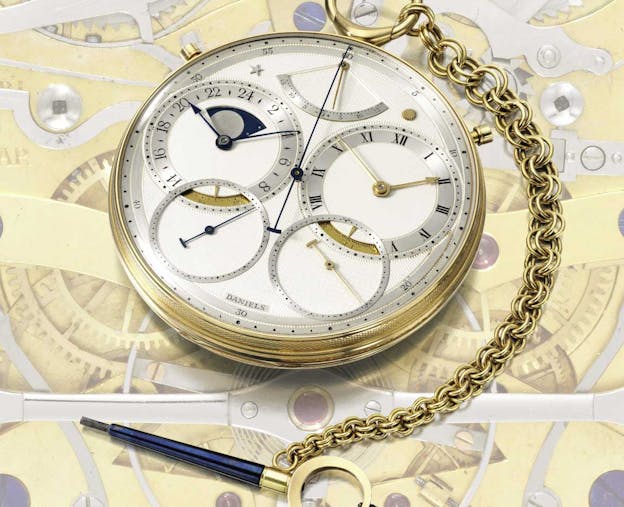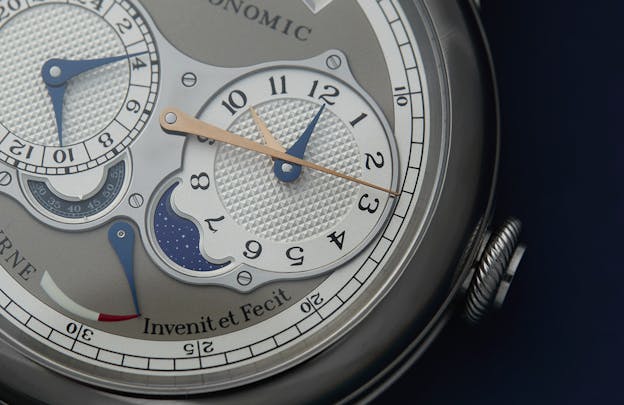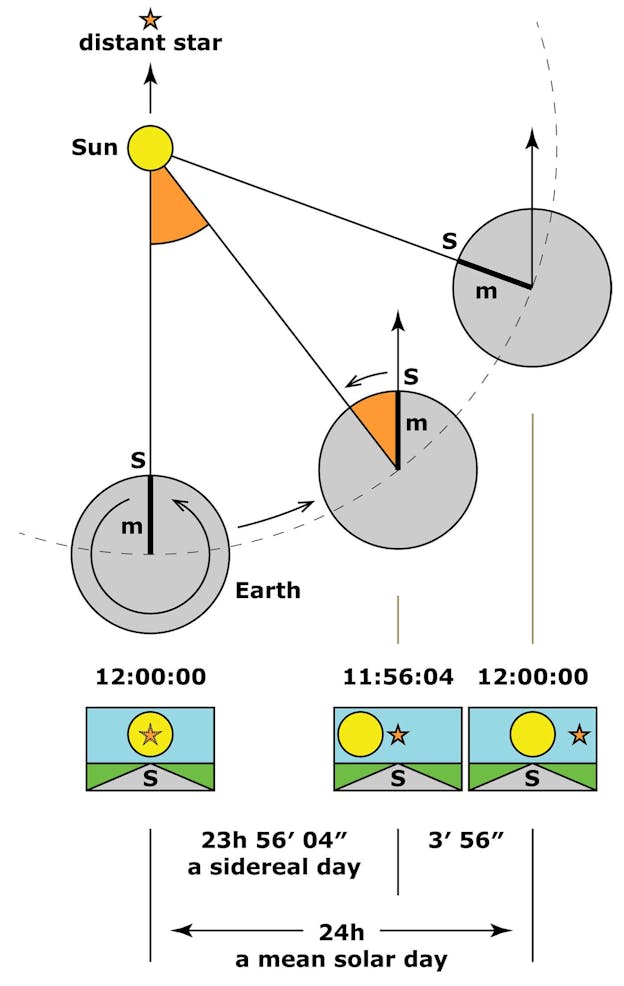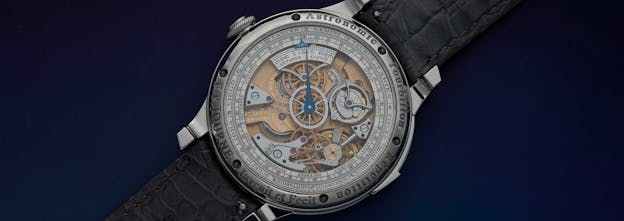A Watch A Week In Depth: The F.P. Journe Astronomic Souveraine
In July of 2019, F.P. Journe announced a unique piece for Only Watch: the Astronomic Blue, which was the most complex watch Journe had ever created. Cased in tantalum, the Astronomic Blue featured a plethora of astronomical and other complications, including a tourbillon with remontoir, annual calendar with Zodiac indications, Equation of Time, sunrise/sunset indication, moonphase, second time zone, power reserve, and for good measure, display of sidereal time. The watch was described as a prototype but Journe added, “the notion of prototype implies there will be a finished piece,” and sure enough, on November 14th, in Tokyo, Journe announced the Astronomic Souveraine – the most complex wristwatch F.P. Journe had ever produced.

The Astronomic Souveraine was originally inspired, says Journe, by a pocket watch which he had created in 1987 for a client named Jean-Pierre Rochefort. The pocket watch had a tourbillon with remontoir, Equation of Time, power reserve, sidereal time, and on the back, a miniature orrery showing the positions of the Earth, Moon, and Sun, as well as an annual calendar. Even before then, Journe had been interested in astronomical complications – one of his most ambitious early projects, which he completed in 1979 at the age of 22, was an orrery for Asprey, in London, which showed the movements of Mercury, Venus, and the Earth around the Sun, as well as the orbit of the Moon around the Earth. Journe’s career has been notable for his exploration of complications and regulating mechanisms intended to improve chronometry, including the tourbillon, resonance systems, and the constant force remontoir, but with the Astronomic Souveraine he returned to the world of astronomical complicaitons, one of his earliest interests.
The composition of the dial reflects the influences of both George Daniels and Breguet, both of whom are admired for their ability to present a good deal of complex information in a clean, legible, and uncluttered design. One of the influences on the 1987 pocket watch was the George Daniels Space Traveller, which shares with both the pocket watch and the Astronomic Souveraine, a dual dial display for civil and sidereal time.

The Astronomic has side by side dials for civil and sidereal time as well and, in addition, a second hour hand for showing the time in a separate time zone, in the civil time dial on the right.

Civil time is the time in a given time zone, which in turn is based on a mean solar day of 24 hours (an actual solar day will vary in length over the course of a year, by an amount equal to the Equation of Time for the day, about which more in a minute). Sidereal time, on the other hand, is based on the movements of the stars. A solar day is the amount of time it takes for the Sun, as seen from the Earth, to return to a given point in the sky (we measure a day from midnight to midnight, by convention, but you could pick pretty much any point in the sky as long as you’re consistent). The time it takes for one of the fixed stars to return to a given point in the sky is a sidereal day, and a sidereal day is shorter than a mean solar day – 23 hours, 56 minutes, and four seconds.
The reason for this has to do with the huge difference in distance between the Earth and the Sun, and the Earth and the stars. As the Earth rotates, it also moves along its orbit, and the distance it moves along its orbit is large enough over the course of a day, that the Earth has to rotate slightly more than one full rotation on its axis to bring the Sun back to the same point in the sky. The stars, however, are so distant that this effect is negligible.

Sidereal time is used by astronomers as a time base, thanks to its relationship to the apparent movement of stars in the sky and historically, the time of stellar transits was used by horologists to measure the rate stability of watches and clocks as well.

The sunrise/sunset times are shown in a sector at 12:00 on the dial. The times per se are not actually shown – what we have, if you want to be terminologically strict about it, is a sunrise/sunset indication. The amount of time that the Sun is in the sky is simply the amount of time that the Sun is visible in the sector, which is controlled by moveable shutters on the right and left. This is an unusual way of showing sunrise and sunset, and it’s more common in clocks than wristwatches, but using it in a wristwatch reduces the amount of visual clutter. Usually sunrise and sunset are shown on two separate dials, which takes up more real estate; the Jules Audemars Equation of Time, which was the first wristwatch to have a sunrise/sunset indication, is an example of the customary approach. The shutter system in wristwatches can be seen in the Krayon Anywhere, and in pocket watches, in the Patek Philippe Star Caliber 2000 clockwatch.

The running seconds are shown on a sector adjacent to the sidereal time indication and if you happen to see the watch when it’s running, you’ll notice that the disk jumps at one second intervals – it’s a deadbeat seconds indication, which is a sign in this case of the presence of the remontoir.

The movement is the Journe caliber 1619, which is quite large for a wristwatch caliber, at 37mm x 9.30mm (one of the things as a watch writer that I have always appreciated about Journe is the detail of the technical information given – you want to know the diameter of the stem threads? Journe’s got you covered). As you might expect from the list of complications the 1619 is an extremely intricate piece of work – 758 separate components, running in 68 jewels at 21,600 vph. Despite the complexity of the movement, the layout is surprisingly harmonious and rather than getting a feeling of hundreds of parts crowded uncomfortably together in limited space, you get an impression of an elegant and logical distribution of components, which reflects the same philosophy as the design of the dial: complexity without clutter. This also extends to setting the watch; all indications can be set from the crown.

The remontoir was originally invented to solve a problem, which is that as a mainspring unwinds, the torque delivered by the mainspring also declines, leading to a drop in balance amplitude, and an increase in rate deviations. The remontoir acts as a kind of secondary power source, and is usually constructed so as to drive one of the intermediate wheels in the going train (usually the fourth or escape wheels) with a secondary remontoir spring. This remontoir spring is wound up at regular intervals by the going train, and ensures steady torque delivery to the balance for as long as there’s enough power in the mainspring to re-arm the remontoir spring.
Most remontoirs in watches use a spiral spring (the recently released Urban Jürgensen UJ-1 is one example) but Journe’s remontoirs use a straight blade spring, whose tip bears on a jewel on a pivoting remontoir arm. This spring discharges and is re-armed once per second, which produces one second jumps of the seconds hand – or seconds disk, in this case.

We mentioned earlier that a civil day is derived from the mean, or average, solar day, which is the average over a year of 365 solar days of varying lengths. Thanks to the eccentricity of the Earth’s orbit as well as the inclination of the Earth’s axis, a solar day can vary from 16 minutes ahead of the mean day, to 14 minutes behind; the daily difference is the Equation of Time for that day. The Equation of Time is interesting astronomically but it was also a useful tool, which allowed clocks to be set to the correct mean solar time from a sundial, which, of course, shows the true solar time. All you had to do was set your clock to the time shown on a sundial, and then add or subtract the Equation of Time for that date, in order to have the correct mean solar time. For this reason, Equation of Time charts can often be found pasted inside the wooden cases of pendulum and other clocks.
The Astronomic also shows the date, as well as the current Zodiac sign, in a rotating ring on the periphery of the caseback. The pointer for the date is fixed to the upper curve of the sector for the Equation of Time indication. Both the kidney shaped cam for the Equation of Time, and the calendar/Zodiac ring, rotate once per year.

Some of the most complicated parts of the mechanism are under the dial, including the motion works for the sunrise/sunset shutters (and their associated cams), the minute repeater racks and snails, and so on. Nonetheless, it is astonishing how well designed the movement is as seen through the caseback. The major active parts of almost all the complications are visible – the remontoir is on the bottom right, with the tourbillon adjacent to it; the center of the composition is anchored by the Equation of Time cam and hand, and to its upper right, the centrifugal regulator for the minute repeater. The triangular cock at 8:00 anchors the pivot for the Equation of Time rack, and the whole thing’s given both visual balance, and a pleasing bit of asymmetry, by the sector for the Equation of Time. The movement plates and bridges are in 18k gold, and the combination of gold, with blued and polished steel, gives a quietly bespoke aura more restrained, but no less impressive, than the dazzle of a traditional Swiss-French style nickel or rhodium plated movement.

Journe is not generally thought of as a watchmaker preoccupied with fine finishing as an end in itself, but I sometimes think he doesn’t get enough credit for his movement designs – not their finish, but rather, the layout of his movements, which often exhibits exactly the sensitivity to both sensible and visually harmonious design you might expect from someone influenced by Daniels and Breguet.

For the Journe collector interested in F.P. Journe as a maker of unusual complications, or in his early history as a maker of astronomical complications, or in his rare ability to combine elegantly composed dials with equally elegantly laid out movements, or all three, the Astronomic represents the pinnacle of Journe’s achievements as a watchmaker. Each of us will always have our favorites of course – I’ve spilled enough ink on the Resonance chronometers to float an aircraft carrier – but the Astronomic occupies a unique place in Journe’s body of work, and shows him at his uncompromising best.
The F.P. Journe Astronomic Souveraine: case, stainless steel, 44mm x 13.7mm, sapphire crystals front and back. Movement, F.P. Journe caliber 1619, plates and bridges in 18k rose gold, dimensions 37mm x 9.30mm. Minute repeater with sidereal time, second time zone, deadbeat seconds on a disk, moonphase and power reserve; on the back, year calendar and Zodiac with Equation of Time. Tourbillon with constant force remontoir, running at 21,600 vph in 68 jewels.

